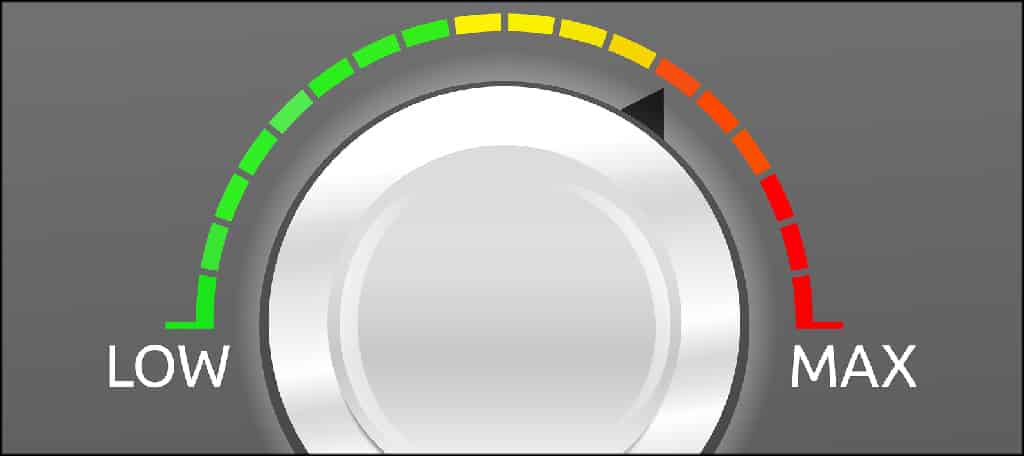When we have an idea for a new business, creating a brand identity is not the first thing most of us think about. But in the long run, it may be the most critical consideration we make.
A strong brand identity doesn’t guarantee success. But a weak or misguided identity can work against a small business.
Big companies can spend millions coming up with, or altering, their brand identity. We may not have those resources, but the fact is, we may not need them.
The identity of a brand or company can be broken down into a few component parts that they all share. And with a little know-how and imagination, you can formulate your own robust and compelling brand identity.
Let’s look at what goes into a brand identity and learn how to craft one that will be captivating and well-received.
It All Begins With Research
Research into your target audience and into your competition.
Before brainstorming on the creative aspects of brand identity design, it’s good to have some research to guide the way.
Researching Your Target Audience

If you’re already in business and have an existing customer base, you have raw data to work with. Even if your pool of customers is small, you can begin to consolidate information about them.
You probably know where they’re located, and you may know their age, gender, and other information. How much personal information you can reasonably glean from a customer depends on the product you’re selling.
A dating site will have access to a lot more personal user information than a site that sells office products. But the office products site may have information that’s more valuable from a product selling standpoint.
You use the customer information to build a profile. It’s called a buyer persona or customer persona. It answers the question, who are you selling to?
Your business will likely support more than one customer persona. Compile as many as necessary. If you don’t yet have any customers, you can still create personas. Speak to prospective customers, or those who you know have purchased from competitors.
Once you’ve established customer personas, refer back to them often. You’ll be surprised at how effectively they can guide you when you’re writing advertising or website copy.
It may seem silly to think about imaginary composites as real people. To give them names and write and market to them. But it works.
Once you “know” the personas, effectively communicating (or selling) to them becomes second nature. Several years ago, I made frequent use of a customer profile, “Jose,” and I still remember his traits and biases. And I still write to them when I think Jose could be a potential user or customer.
Researching Your Competition

Look closely at your successful competition and try to determine which elements of their identity are contributing to their success. That’s the easy part. Then comes the hard part, thinking about how you can improve on those elements, or provide a new perspective on them.
Some businesses are created as virtual carbon copies of existing successful business identities. You used to see that a lot in our industry (website hosting). That’s certainly one way to go about creating a new business. Not a very good one, but I suppose I can understand why people do it. It’s easy and it’s low-risk.
But it’s also low-reward.
Copying an existing business identity may reap some immediate benefits in the short run. But long term, it’s nearly unheard of for a copy to surpass the original.
So yes, improve or put a new spin on the things that the competition is doing right. Don’t just duplicate them.
Adjust the Tone Control

The first thing we did was look at who our potential customers might be. And there’s a good reason we did that first. Because who the customers are has an impact on just about everything else we’re going to talk about.
Like, tone.
I mean the tone of the business identity and the way it communicates and positions itself.
If the business were a person, who would that person be? What kind of personality would they have? What would our perception of them be?
The goal is to create a business personality, perception, or tone that resonates with your customer personas. Create one that compliments them. Not a persona that clashes with or irritates customers.
How to Find Your Tone
One handy way to begin a tone exercise is to think of adjectives that describe your business. Adjectives are words that describe attributes. So words like helpful, adaptable, creative, versatile, enthusiastic, practical, sincere, honest, inventive, passionate, or reliable are positive adjectives.
Try writing a brief description of your brand that contains three positive adjectives that you believe to be relevant. Just a few sentences.
Does the description say what you want to communicate about the business? If not, look for some other adjectives and try again.
A good, short description of your brand is an incredibly useful tool. Writing one, though, is more complicated than it sounds.
Anyone can write a thousand-word essay about their brand. Summing up what you’re all about in 50 words is a far more significant challenge. But that 50-word description will serve you in many ways, so spend as much time as necessary crafting it.
Adding Your Tone to the Mix
Now take your finely crafted description and run it past your customer personas. Do they complement each other? Does your description speak to your persona?
If it doesn’t, go back to the drawing board until you come up with one that does. You see what we’re going for here; we want the different parts or elements of your identity to dovetail nicely into a single message.
Your brand identity.
The description you create and those adjectives can also be applied to imagery and design to help find complementary visuals. We’ll talk more about that in a minute.
Side note: You don’t want to use adjectives with negative connotations to describe your business, of course. But negative adjectives that could apply to your business can still be useful. They can be used to identify issues or ideas that you want to avoid communicating. Measuring writing or design against a negative list can help ensure that none of those ideas creep into your message.
Remember that when someone first encounters your brand, all they’ll know is what you tell them. That first impression is a critical piece of communication. Make sure you’re getting the most important points across.
Color Your World: Finding the Perfect Color Scheme

As we build our brand identity, the next thing to consider is visuals. Your visual identity is expressed in graphic design. Colors, images, the overall color scheme that will represent your brand.
The color scheme will carry over into images, social media presence, everywhere the brand is visually represented. So you could say it’s essential to your brand identity.
It may be more important than your description. Humans respond to color in complex ways. There are accepted norms and ideas about which colors inspire which emotions, but I don’t want to repeat them here. This is because they aren’t universal.
Using Colors That Complement Your Message
How you respond to color or what you associate with specific colors depends on age, culture, physiology, and preferences. So if I say, “blue means calm,” that will apply to some people but not others.
So rather than using the same standards that everyone uses, let’s go back to our customer personas and brand description.
It’s still a complicated mix and a process that’s part of creative magic. But maybe you found some color preference information in your customer persona research. Or, perhaps you can look for it specifically. It will depend on who your customer is and your brand identity.
A color scheme that works for a children’s toy store may not go over well with the customers shopping for technical or scientific products.
But if you hit a potential customer with a page full of colors that don’t agree with them, they’ll probably run in the opposite direction. So think about your personas and think about what you like.
Adobe has a tool that can help you find complementary colors. You might use that to get a baseline or find some combinations that appeal to you.
But my best advice to you, as far as choosing a color scheme is concerned, is to seek professional help. Design and color are areas where you can definitely benefit from consulting a graphic designer.
We all think we can design and choose colors, but most of us are, frankly, not very good at it. If you are good at it, great! Otherwise, talk to a pro. It will be money well spent.
Choosing the Name That Best Represents Your Business

Hmm, this is pretty far down the list, isn’t it? Shouldn’t it be first?
Traditionally, we might brainstorm a name before doing anything else related to a new business.
But we’re crafting an identity, and the name should be based on what we’ve already created. The business description, the tone, the customer profiles – all of those should complement and play into the name.
The brand name, like the color scheme, can involve a bit of creative magic.
There aren’t a lot of valid rules or guidelines for name creation. If there were, we wouldn’t be surrounded by so many bewildering naming trends. How many thousands of businesses use “lr” in place of “ler”? Or slap an “er” (or just “r”) suffix onto adjectives?
For example, “Pixlr” or “Tumblr.”
Please don’t do that to yourself or your business. A) it makes you look like a follower, B) they don’t age well, and C) it’s just plain bad for humanity.
Nonsense names or made-up words can be valid names. Just be thoughtful and inventive if you go that route. Don’t just follow a trend. It only takes about five years for trends to begin to show their age. And you don’t ever want to find yourself in a position where you’re considering changing the name of your business.
If you get stuck, you can try a business name generator. But use tools like that to spark your imagination, not to choose a name.
We live in an online world. Your business is online (either entirely or partially), so it’s essential to think about domain names. While you’re considering names to go with your brand identity, also search for the .com domain versions of the names.
The availability of your chosen name as a .com domain should not necessarily dictate your choice of a name, but it should be considered.
Creating a Logo That Compliments Your Brand Identity

Your logo isn’t as important as your brand name, but it isn’t far behind. It’s one of the primary forms of brand identification. And even though I’ve written about the ability to create a logo online, it’s usually something better left to professionals.
If you approach a graphic designer with your research and a firm grasp of your brand identity, their job will be much easier (thanks to the work you’ve already done).
The results will be more satisfying, and the designer will love you. Trust me, most of their clients do not present them with a well thought out identity or plan.
Finally, let me leave you with two concepts that are a little more general, but just as important as the specific issues we’ve talked about.
Be Consistent
Hopefully, your identity and message will be carefully considered and executed. That’s a great start. But it’s easy to lose sight of your original identity or identity goals over time.
So you have to strive for consistency in everything you do. Take a step back periodically to make sure your message is still strong.
Think about your brand identity when it comes to imaging and representing your brand visually on social media and elsewhere. Avoid representing your brand in ways that are inconsistent with your initial description.
Keep your customer personas in mind when writing help documents or tutorials. Every bit of communication you do should be consistent with the way you’ve crafted your brand.
Be Awesome

When you’re getting started, you can make mistakes with your brand identity but still retain and attract customers. All you have to do is be awesome and the occasional misstep will be forgiven.
- Respecting and caring about potential customers is awesome.
- Providing a good product at a reasonable price is awesome.
- Continuing to take care of customers after they’ve given you their money is awesome.
- Transparency and honesty are awesome.
If you conduct yourself honorably and hold everyone you work with to the same high standards, you’ll automatically be awesome. That will become part of your brand identity, and that can’t help but be well-received.
Have Fun with Creating Your Brand Identity
As you’ve no doubt gathered, establishing a brand identity can be hard work. There are a lot of boxes to check, a lot of details to wrangle. But while you’re doing the hard work, don’t forget to have fun. Positivity is contagious.
Good luck!

